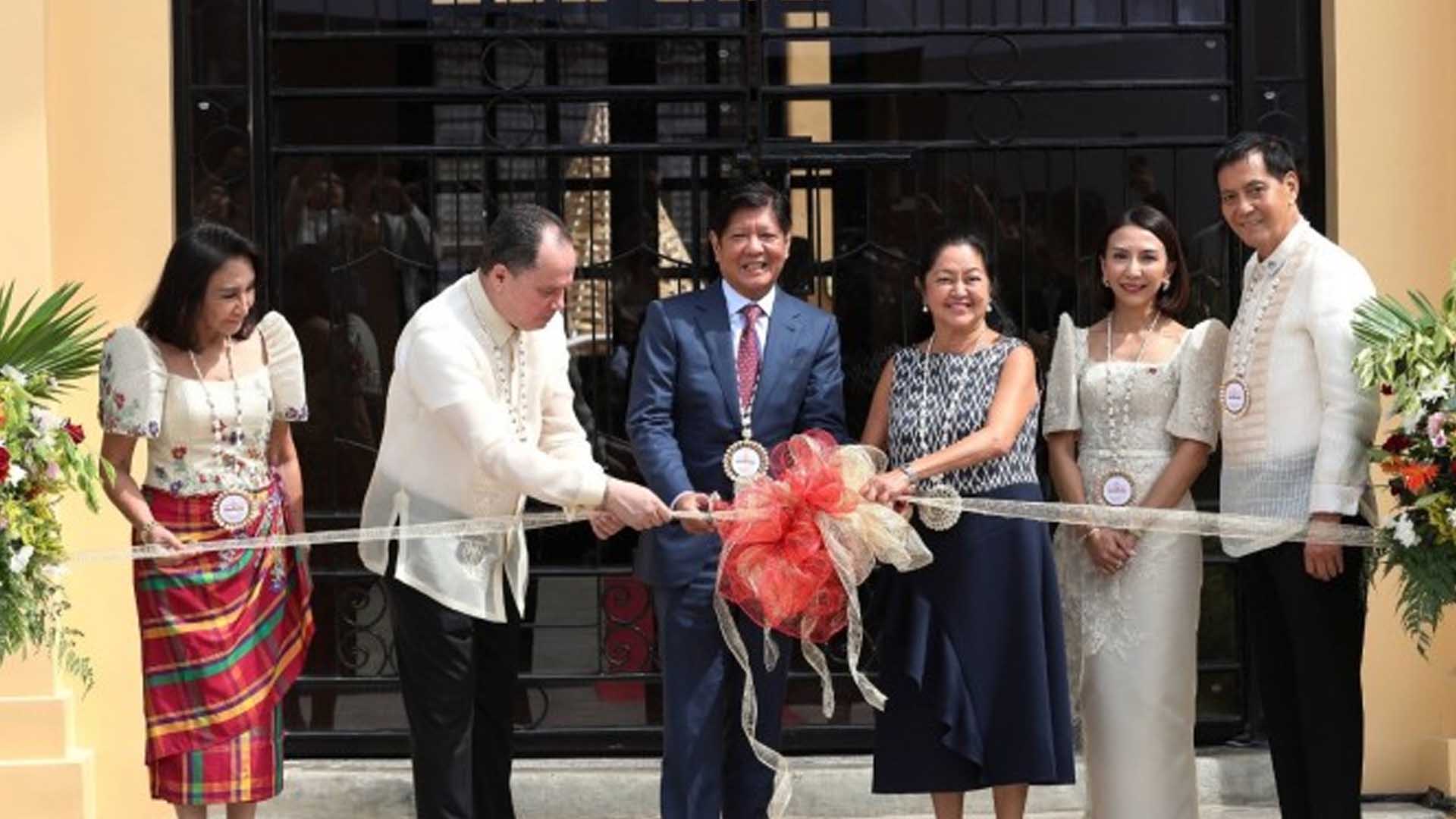President Ferdinand R. Marcos Jr. encouraged Friday foreign and local tourists to visit the new museum in this first city in the Philippines to learn not only Cebu’s vast cultural and artistic assets, but also the country’s rich history.
Marcos led the cutting of the ribbon and unveiling of the marker at the National Museum of the Philippines (NMP)-Cebu, along with First Lady Louise Araneta-Marcos, Department of Tourism Secretary Christina Garcia-Frasco, NMP chair Andoni Aboitiz, Gov. Gwendolyn Garcia and Mayor Michael Rama.
The President said opening a new museum in this capital city is aligned with his administration’s national agenda to promote tourism and nurture the Filipinos’ national identity.
“It is my thrust not only for the Queen City of the South and the whole province of Cebu but for the entire country, as opening of this museum brings to the fore our rich national culture and artistic treasures,” Marcos said in his speech shortly after the ribbon-cutting and marker unveiling.
He cited the NMP for working hard to make the opening of the Cebu Museum, which will also be known as the Central Visayas Regional Museum, located at the old customs house around the Plaza Independencia here, despite setbacks brought by the coronavirus disease 2019 (Covid-19) pandemic and Typhoon Odette.
“We are finally here today opening its doors to the public. The inauguration is a true testament that we can pursue a united approach to any task,” Marcos said, citing the national government’s shared commitment and dedication to establishing a national museum in Cebu.
The President highlighted the importance of the museums not only for individuals studying artifacts and academicians but to all Filipinos, saying that “every young country such as the Philippines has to find its identity.”
“And we need to answer that question… what does it mean to be a Filipino. And this is an illustration precisely of the cultural heritage that we all share. And what is a culture, that is a shared view of our lives, a shared view of our people, a shared view of our country,” he said.
“And that is why it is important that we have (to) celebrate these historical artifacts that shine a very, very strong light about where Filipinos came from, what we have done since, and what is the trend, where we headed at. The past has many lessons and the past that also provides a view by which we can say I am like you, I am like you, I am like you, I am like you. I am a Filipino. And that is why today is so important,” Marcos said.
The museum has five galleries highlighting Cebu’s unique geological features and publicly unfamiliar plant and animal species endemic to the place, significant archaeological finds about the Cebuanos and Filipinos’ history and prehistory, and sustained ethnographic traditions inculcated in maritime history and industry.
Gallery 4 is a special part of the inaugural exhibitions, bringing the collection of the Philippine Center in New York to Cebu to share the artworks of leading Filipino artists in the early 1970s.
Former First Lady Imelda Marcos requested the acquisition and curation of the collection of the Philippine Center in New York, thus bringing 120 artworks from Manila to New York.
Meanwhile, Gallery 5 features selections of Martino ‘Tinong’ Abellana’s works, recognized as the “Dean of Cebuano Painters,” such as his creative rendering of sketches, portraits, abstract paintings and landscapes.
Originally established as the Cebu Customs House in 1910 to facilitate trade between Cebu Island and other neighboring communities, the facility was converted into the Malacañan sa Sugbo in 2004 to bring the presidency closer to the Visayas.
In October 2013, it was affected by a 7.1-magnitude earthquake and had to be closed.
During the administration of former President Rodrigo R. Duterte, the facility was converted into a museum to be managed by the NMP.
The building was restored and adaptively converted to museum purposes through funding support from the Tourism Infrastructure and Enterprise Zone Authority. (PNA)








